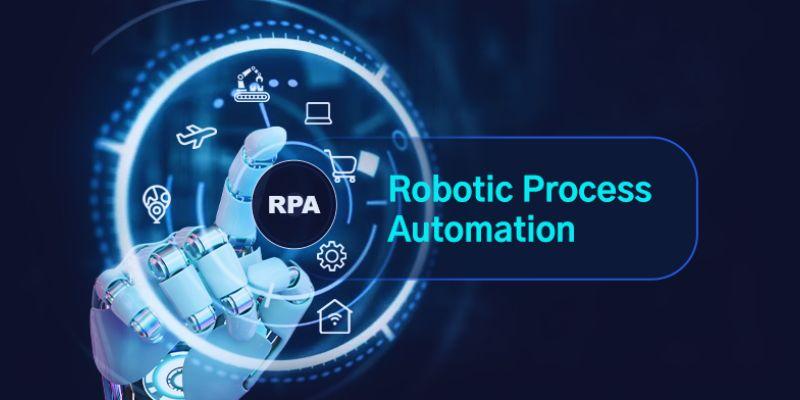Intensive Care Units (ICUs) are transforming their practice of providing critical care through artificial intelligence (AI). In this article the author discusses the role of AI enabled tools in better monitoring patients, predicting health outcomes, and helping health care professionals make life-saving decisions more successfully, and more efficiently during high-stakes situations.
The Significance of Innovation in ICU
The ICUs are the special sections of the hospitals that point out the care to the acute-ill patients. Such patients need close attention and difficult cure and urgent therapy to survive. ICU care is commonly demanding to the medical professionals due to the high numbers of critical cases and the pace of operations, which is characterized as a fast-paced job. This is where AI can be of importance.
How can AI Save Lives in ICU?

The current developments in the field of the Artificial Intelligence are changing how Intensive Care Units (ICUs) are functioning by offering them tools to assist medical teams in providing life-saving care. The real-time use of AI in analyzing and processing huge sets of data narrows a new opportunity to enhance patient outcomes and overcome the critical challenges that are present in ICUs. The following are some of the main spheres in which AI has been quite effective.
Early Detection of Patient Deterioration
Artificial intelligence systems would detect even the slightest variation in the conditions of the patients that could be overlooked by human care workers. These systems could give an early warning to possible complications by studying vital signs, laboratory results, and other clinical data in real time.
This enables medical teams to act early before the situation gets worse and as a result, this increases the survival rates and limits the chances of long-term consequences. This is especially important in the ICUs, as the conditions of patients can change dramatically without timely treatment.
Predictive Analytics for Critical Events
Harnessing predictive algorithms, AI can foresee critical events such as sepsis, cardiac arrest, or respiratory failure. Using historical and real-time patient data, these models predict the likelihood of these events occurring. This proactive approach helps healthcare providers prepare for emergencies in advance, ensuring that necessary resources and interventions are readily available.
Predictive analytics empower clinicians to focus attention on high-risk patients, ultimately enhancing both the quality and timeliness of care in the ICU setting.
Automated Vital Sign Monitoring
Monitoring vital signs is a fundamental aspect of ICU care. AI technologies integrate with monitoring devices to track patients’ vital indicators like heart rate, blood pressure, and oxygen levels. These systems can alert medical staff instantly in case of alarming fluctuations that suggest instability. Automated monitoring reduces the burden on healthcare professionals, allowing them to focus on decision-making and treatment rather than continuous manual tracking.
Personalized Treatment Plans
AI-driven data analysis enables the creation of treatment plans tailored to each patient’s unique needs. By leveraging information such as genetic data, medical history, and current condition, AI can recommend interventions that maximize the likelihood of success.
This level of personalization ensures that therapies are precisely targeted, reducing trial-and-error approaches. For ICU patients, where time and precision are of the essence, tailored treatment plans can vastly improve recovery and minimize complications.
Optimized Medication Dosing
Incorrect medication dosage can have severe consequences for ICU patients. AI tools analyze data like weight, age, kidney function, and disease state to calculate the most effective and safest dosages for medications. These systems can also account for drug interactions, lowering the risk of adverse effects. AI's optimization capabilities not only enhance patient safety but also contribute to better resource management by reducing medication waste.
Real-Time Decision Support
AI-powered systems provide real-time decision support to healthcare professionals in the ICU. By continuously analyzing patient data and detecting changes or trends, these systems can alert clinicians to potential issues before they escalate. This capability enables timely interventions, which are critical in intensive care settings where seconds can make a difference in patient outcomes.
Reduction of Human Error
One of the significant benefits of incorporating AI into ICUs is the reduction of human error. Mistakes in diagnosis, medication dosing, or treatment plans can have severe consequences for critically ill patients. AI algorithms assist clinicians by offering evidence-based recommendations, analyzing complex data, and double-checking calculations, significantly mitigating the risk of errors and enhancing patient safety.
Streamlined Workflow and Task Automation
AI streamlines workflows by automating routine and time-consuming tasks such as data entry, vital sign monitoring, and reporting. This allows medical staff to focus more on patient care and complex decision-making. Automation reduces administrative burdens, increasing efficiency and improving the overall quality of care in the ICU. Additionally, AI adapts to evolving workflows, improving task organization.
Enhanced Resource Allocation
AI systems are instrumental in optimizing resource allocation in high-pressure ICU environments. By predicting patient needs and identifying patterns in resource utilization, these technologies ensure that critical equipment, medications, and staffing are allocated effectively. This results in more efficient use of resources and the ability to provide high-quality care to more patients, even during peak demands or emergencies.
Improved Infection Control and Prevention
AI aids in infection control and prevention by analyzing patient data and environmental factors to predict and identify potential outbreaks. These systems can monitor for signs of infection, flag at-risk patients, and even assist in maintaining sterilization protocols. By identifying risks early and offering actionable insights, AI contributes to reducing hospital-acquired infections, ensuring a safer environment for both patients and staff.
Challenges and Ethical Consideration

While AI in infection control offers immense benefits, it is not without challenges. Addressing these hurdles is vital to ensuring responsible implementation and maintaining trust in healthcare systems. Below, we explore key challenges and the ethical considerations surrounding the use of AI in this crucial area.
Data Privacy and Security
AI systems rely heavily on patient data to function effectively, raising concerns about privacy and data protection. Large-scale data processing increases the risks of breaches and unauthorized access. Ensuring robust data encryption, compliance with regulations like HIPAA, and transparent data usage policies is crucial to safeguarding patient privacy.
Bias in AI Algorithms
AI systems are only as unbiased as the data they are trained on. If training datasets lack diversity or contain inherent biases, they can lead to inaccurate predictions and unequal care. Addressing algorithmic bias through diverse datasets and regular auditing is essential to avoid disparities in treatment outcomes.
Human Oversight and Reliance
While AI enhances infection control, over-reliance on automated systems may result in overlooking critical human judgment. Striking a balance between AI capabilities and human expertise is necessary to prevent errors and ensure comprehensive care. Establishing a robust framework for collaboration between humans and AI can bridge this gap effectively.
Conclusion
AI is transforming ICU care by enabling early detection of critical issues, supporting personalized treatment, and reducing medical errors. With real-time decision-making and predictive analytics, it enhances patient monitoring and optimizes resources. While challenges like data privacy and bias must be addressed, the integration of AI in critical care settings holds the promise of improving survival rates, streamlining workflows, and ultimately saving more lives in high-pressure healthcare environments.












